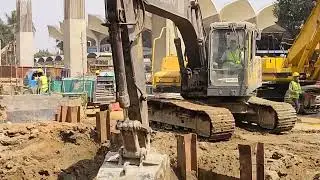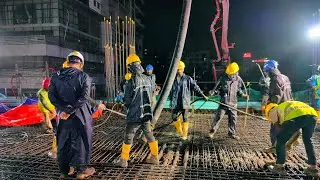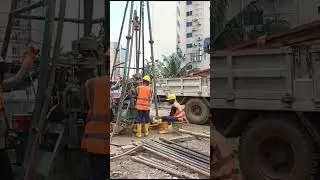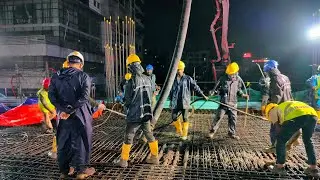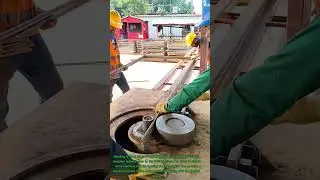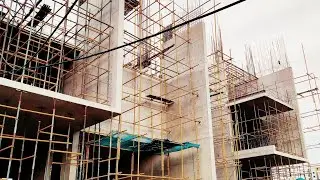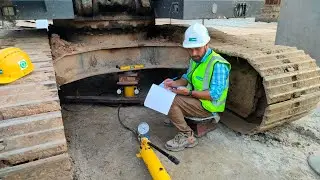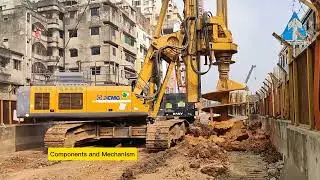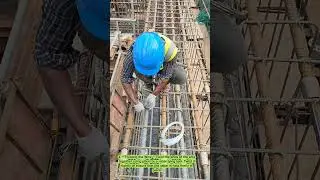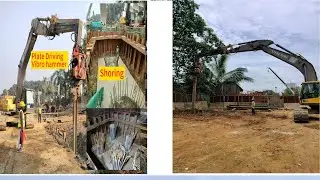H Beam Drive for Shoring by Vibratory Pile Driver (Vibro Hammer)
Shoring excavation involves supporting the sides of an excavation to prevent soil movement and cave-ins. Here are basic steps:
1. *Site Assessment:* Evaluate soil type, water table, and adjacent structures to determine the appropriate shoring method.
2. *Design:* Engage a structural engineer to design a shoring system based on soil conditions and excavation depth. Common methods include soldier piles, sheet piles, or braced excavations.
3. *Install Soldier Piles or Sheet Piles:* If using soldier piles, install vertical steel beams (piles) along the excavation perimeter. For sheet piles, drive interlocking steel sheets into the ground.
4. *Install Horizontal Supports:* If required, install horizontal supports (wales) between soldier piles or anchor sheet piles to provide lateral support.
5. *Excavate in Tiers:* Excavate in manageable tiers, typically around 5-8 feet deep, and install shoring as needed before proceeding to the next tier.
6. *Bracing or Tiebacks:* Depending on the design, install diagonal braces or soil anchors (tiebacks) to enhance stability. These elements help distribute lateral forces and prevent soil movement.
7. *Install Shoring Continuously:* As excavation progresses, continue installing shoring elements to maintain stability throughout the process.
8. *Monitor and Inspect:* Regularly inspect the shoring system for any signs of movement or failure. Monitor groundwater levels to prevent destabilization.
9. *Backfill Gradually:* Once the required work is completed, backfill the excavation gradually, removing shoring elements in a controlled manner as you go.
Always consult with a qualified engineer and adhere to local regulations to ensure the safety and stability of the excavation.


![Mangiatori Urlanti 2 - [Candid Camera] - Divergents](https://images.mixrolikus.cc/video/QFh-Wx02CE0)





